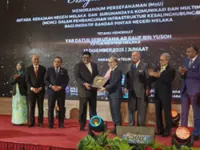WHAT happens when you add salt to ice?
It was a question posed by Science teacher Norhailmi Abdul Mutalib to his students at SMK Jerlun in Alor Setar, Kedah. He could have easily made his students search for the answer in their textbooks (spoiler alert: the freezing point decreases).
Already a subscriber? Log in
Save 30% OFF The Star Digital Access
Cancel anytime. Ad-free. Unlimited access with perks.
Related stories:
Follow us on our official WhatsApp channel for breaking news alerts and key updates!
social media
,
creative teacher
,
innovation
,
digitilisation
,
learn
,
classroom
,
Instagram
,
Tik Tok
Thank you for your report!





